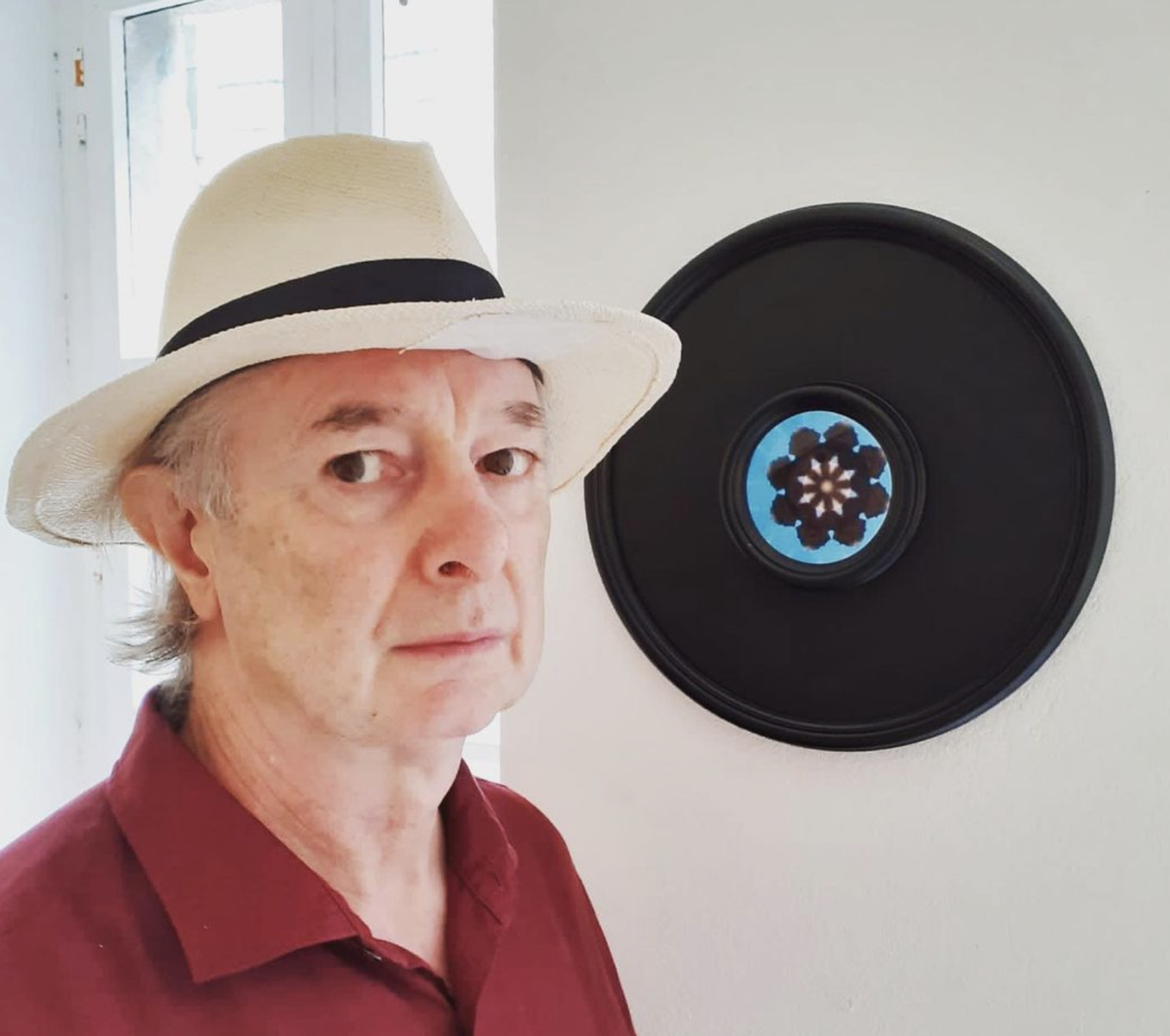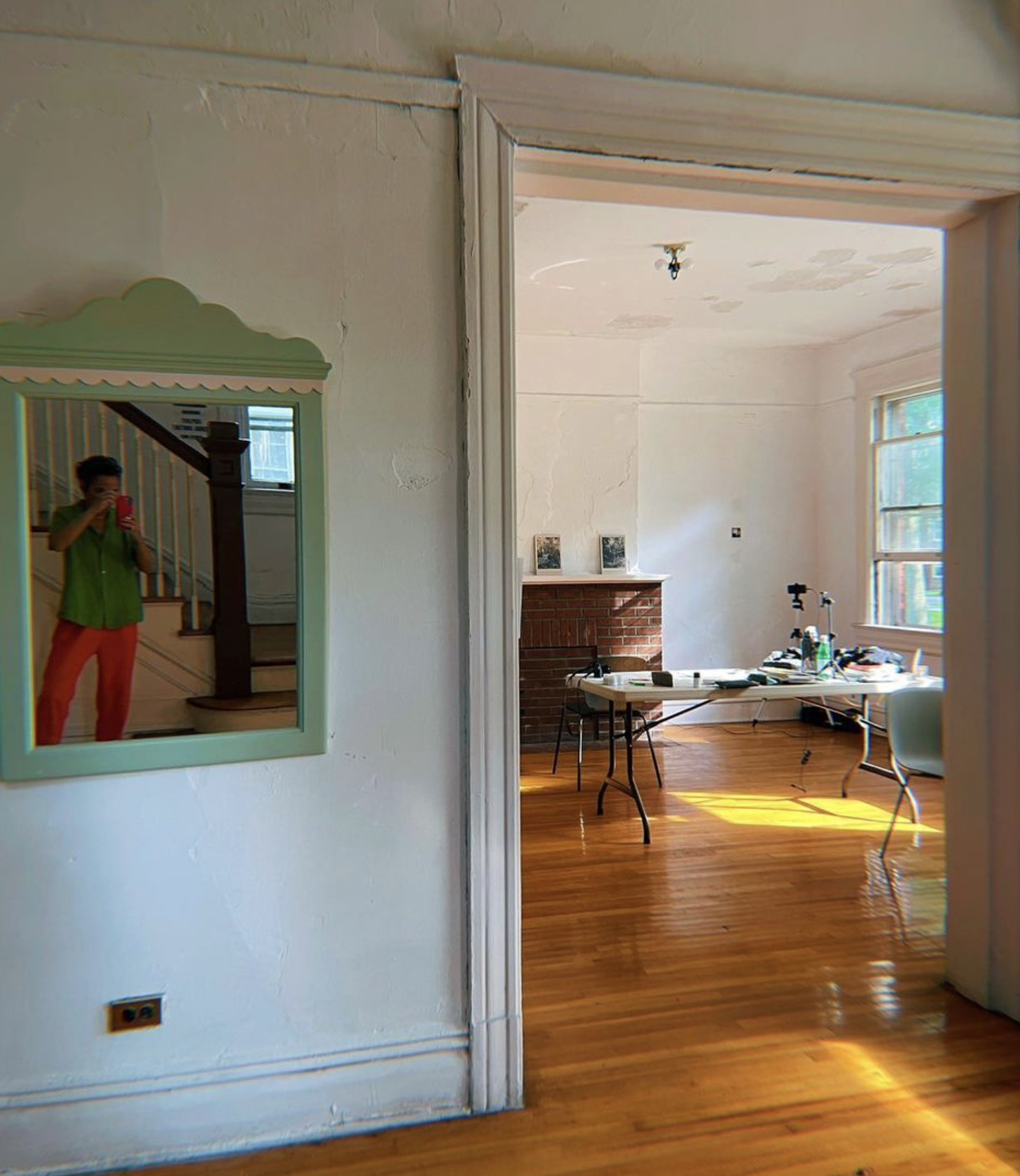Reviews by Stephen Gambello
Natan Diacon Furtado
The living potential of rubber stamping comes to full fruition with Natan Diacon Furtado’s objects. In his statement, Natan champions the spirit of collaboration. In a sense, his work reflects (and literally reflects with the mylar pieces) the interactive collaboration between the stamp and the shape of his vision, as in the “Our Maps” series. The stamps present themselves uniformly upon the surface of the paper, but Natan thoughtfully, strategically, colors certain segments, giving us a diversion point to pivot our thinking, subtly altering our initial impression of his grand design.
With the delicately hung silver cutouts protectively (almost maternally) surrounding colored paper, a triangulation of chroma is enabled, by way of this reflective and reflexive arrangement of materials. It becomes familial, intimate and yet empowering as well.
By Stephen Gambello
Maddy Rosenberg
“I take places from one context in order to create, assemble, a new context.” Maddy Rosenberg explains. These are intimate works. Although linear, the lines live within the shadows of a reverence for memory. The previous centuries are acknowledged by the old world maps of New York on the walls, instilling the space with a living and deliberate touching of the past with the present.
By Stephen Gambello
Ann Cofta
The city is transformed into a jubilant configuration of “softened” urbanity. Ann Cofta is arranging the metropolis into a hierarchy of poetic elements. The color and the shapes reflect the flexibility of a continually burgeoning cityscape. These fabrics are evocative of the artist’s impression of the urban variegation of civilization. The solid colors of the fabric become a harmonious chromatic champion to the endless subtleties of the underlying complexity of the metropolis. Fabric, color and texture becomes the translation of reality into the very glorious articulation of Ann Cofta’s inner self, substantiated by interpreting the surrounding urban environment and bringing a chromatically realized identity to artistic life.
By Stephen Gambello
Natali Bravo-Barbee
Spiritual markers rendered as white lines inhabit the deep rich blue fabrics of Natali Bravo-Barbee. It endows a direct experience upon the viewer of immediate symbolic transcendence — the dark blue evoking the night sky, as the white lines evoke purity, cleansing as an “otherness”. As light sinks through the fabric, the silhouetted figures become articulations of the soul.
By Stephen Gambello
Marty St. James
His work is about being in time and space.
The hat is a nod to his grandfather.
His self.
His signature.
"ALL MY ENERGY AND CREATIVITY EXISTS BENEATH MY HAT" - Marty St. James
To paraphrase Mr. St. James:
He gives -- by way of a particular action of Performance (I give) his viewers an individual memory imprint that each individual can savor as an intimate gift.
By Stephen Gambello
Lucia Warck Meister
Why do we keep fragments either emotional or physical? What is the process of creation when beholding these fragments? These are the questions Meister asks.
Memories, comprising the sum totality of our unique selves, are fragmentations that alchemically or metaphysically unify into forever transitioning reiterations of identity.
Nature is also fragmented -- and Meister has held in abeyance these natural fragments (branches) by way of man-made technology such as resin. The concrete relief patterns are "colored" with resin further refining the harsh surface of the concrete, its polish is very elegant and inviting to the touch. The branches, then, become civilized in a sense, ready to inhabit a civilized modern space, a home, or a gallery/museum.
By Stephen Gambello
Jacqueline Herranz Brooks
The triptych of park scenes from Forest Park Queens invites us to ruminate on the phantasmagorical memories of a lost indigenous people. Their faces have become absorbed within the endlessly transitioning form of the foliage. The pale golden frame softens the landscape, subtly hypnotizing the viewer into a dreamlike mood.
By Stephen Gambello







